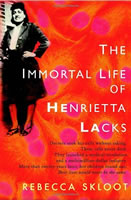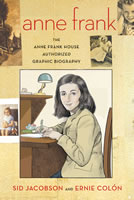
Beyond Web 2.0, gadgets, and widgets lies the simple connection between content, context, computing, and learning. This session explores way to connect the new National Educational Technology Plan for transforming American education with practical classroom activities that promote student achievement and a passion for learning.
Have we lost the beauty of learning in schools? It's time to rediscover the beauty of learning. Beauty are those qualities that give pleasure to the senses. Mathematicians talk about the beauty of the golden ratio. Let's connect content, context, and computing to bring back the beauty in learning.
Rediscover Content. Technology allows us to see content in new ways. For instance, we can view microscopic images of snowflakes at Snowflake from Electron Microscopy Unit of USDA.
Rediscover Context. With the emphasis on "seat work" and testing, young people may be missing opportunities for experimentation, exploration, and engaging learning environments.
Rediscover Computing. It's not the gadget, but how it's used that has an impact on learning.
Rediscover the Beauty of Learning. Model the beauty of learning by sharing examples of people who love to learn such as Snowflake Bentley.
Quality Content plus Meaningful Context plus Powerful Computing equals Success
"Students want to know how different mathematical methods fit together and why they work. This is especially true for girls and women." (What's Math Got to Do With It? by Jo Boaler, p. 43).
The real-world contexts are simply a way to get to the more important issue of "why we need math". Not everyone needs to know "why." However, research shows that the "why" question is particularly important for girls. A context helps youth understand why learning math is important and how it connects to the everyday world outside school.
Context is more important for some learners than others. Think about the range of situations where students learn content going from abstract to concrete experiences.
When exploring resources for learning, consider materials designed for young people such as Expeditions from Ology. Also consider materials such as Ocean Explorer from NOAA that apply professional experiences to student learning.
Consider materials that can provide a general context for learning such as Street View Gallery from Google Maps and also a specific context such as Street View Antarctica and Google Map Antarctica.
Read the National Educational Technology Plan 2010 by the Office of Educational Technology, U.S. Department of Education (2010). It focuses on 21st century learning "powered by technology" (p. 4). While much of the plan focuses on the heavy "data-centered" approach of the last decade, there are glimpses of hope for a shift toward innovative approaches to teaching and learning.
The plan contains five elements: learning, assessment, teaching, productivity, and infrastructure.
The Goal - All learners will have engaging and empowering learning experiences both in and outside of school that prepare them to be active, creative, knowledgeable, and ethical participants in our globally networked society.
The website Your Life, Your Money from PBS provides quality learning resources that can be applied both inside and outside the school setting.
Action 1.4 - Use advances in the learning sciences and technology to enhance STEM (science, technology, engineering, and mathematics) learning and develop, adopt, and evaluate new methodologies with the potential to enable all learners to excel in STEM.
Real-world data such as the infographic Earthquakes can help bring scientific data alive for learners. Experiences such as Prince William's Oily Mess: A Tale of Recovery - Graphic Changes in Marine Life: Working with Real Data provide real-world applications of science.
 CCC Example
CCC Example
What and How People Need to Learn - "It brings state-of-the art technology into learning to enable, motivate, and inspire all students... to provide personalized learning."
What if we could motivate students and personalize learning? The project Admongo.gov provides an Ad Library where students make choices about the areas they wish to explore.
The Goal - Our education system at all levels will leverage the power of technology to measure what matters and use assessment data for continuous improvement.
After reading a story called Enemy Pie, children shared an experience applying what was learned in the book. Rather than a traditional writing assessment, they recorded their voice. Listen to their VoiceThread.
In the ESOL project, students share the places they are from using VoiceThread.
Action 2.3 - Conduct research and development that explore how gaming technology, simulations, collaboration environments, and virtual worlds can be used in assessments to engage and motivate learners and to assess complex skills and performances embedded in standards.
CCC Example - Audio and video in assessment process. Students sharing understandings of process using tools such as journaling, photography, screen captures and white board.
Using Data to Drive Continuous Improvement - "21st century learning requires new and better ways to measure what matters, diagnose strengths and weaknesses in the course of learning when there is still time to improve student performance... measure 21st century competencies and expertise – critical thinking, complex problem solving, collaboration, and multimedia communication – in all content areas."
What if we could focus on critical and creative thinking? Explore such as Switcheroo Zoo and BuildYourWildSelf that ask students to apply knowledge and make decisons.
The Goal - Professional educators will be supported individually and in teams by technology that connects them to data, content, resources, expertise, and learning experiences that enable and inspire more effective teaching for all learners.
Action 3.4 - Use technology to provide access to the most effective teaching and learning resources, especially where they are not otherwise available, and to provide more options for all learners at all levels.
CCC Example - Professional development opportunities and online resources for teachers... matched with learning communities. Look at professional organizations.
21st Century Resources for Professional Educators - "... teams of connected educators replace solo practitioners and classrooms are fully connected to provide educators with 24/7 access to data and analytic tools as well as to resources that help them act on the insights the data provide."
What if educators worked together to create learning experiences? Each teacher could do what he or she does best. Resources like Edutopia provide lots of examples.
 Infrastructure
InfrastructureThe Goal - All students and educators will have access to a comprehensive infrastructure for learning when and where they need it.
Go to Where Did the River Go? from Learn Direct for an example of a motivating reading environment.
Go to Astrobiology to read a new graphic novel-style e-book from NASA.
Action 4.3 - Leverage open educational resources to promote innovative and creative opportunities for all learners and accelerate the development and adoption of new open technology-based learning tools and courses.
Explore resources developed by museums such as Games from UK Museums and The Tate Movie Project.
CCC Example - Goes beyond the school to include, libraries, museums, and workplaces.
Always-on Learning Resources - "... a comprehensive infrastructure for learning that provides every student, educator, and level of our education system with the resources they need when and where they are needed."
What if everyone had anytime, anywhere access to learning? Archive.org provides open source resources.
The Goal - Our education system at all levels will redesign processes and structures to take advantage of the power of technology to improve learning outcomes while making more efficient use of time, money, and staff.
Go to Wikispaces for Educators to build an environment for student learning.
Action 5.4 - Rethink basic assumptions in our education system that inhibit leveraging technology to improve learning, starting with our current practice of organizing student and educator learning around seat time instead of the demonstration of competencies.
Mr. Chase's Government Class uses a wiki to structure class activities. There's no textbook. Activities and assessments use real-world resources. Students take the U.S. Citizenship and Immigration Services test.
CCC Example. Rethinking traditional curriculum pacing. Online learning and options that go beyond the traditional school day.
Rethinking Basic Assumptions - "We must leverage technology to plan, manage, monitor, and report spending to provide decisionmakers with a reliable, accurate, and complete view of the financial performance of our education system at all levels."
What if we used real-world resources and assignments. Consider the wealth of government-sponsored resources around the world including USA.gov. How much money could be saved?
 Anne Frank as an Overall Resource
Anne Frank as an Overall Resource
Explore the life of a person, place or thing within a specific context and also the greater context of a time period or event.
Connect to Young People. Connect Anne Frank to the larger context of World War II. Example: Anne Frank
Making a Difference. Learn about individuals who made a difference. Example: The Power of Children from Children's Museum of Indianapolis
Make it Personal. Explore individuals within the context of an event. Example: Titanic Project
Slice of Life. Explore an event and use documentary photos to write an historical fiction story based on the time period. Example: Dust Bowl.
Family and the World. Compare family history with a larger global event. Example: Civil Rights Timeline.
All Around Me. Trace the world events that happened in your lifetime.
The National Educational Technology Plan 2010 focuses on learning powered by technology. However, that's just the beginning. What really matters is how teachers, government, business, and others collaborate to make it happen.
For many more ideas, go to my website at eduscapes.com